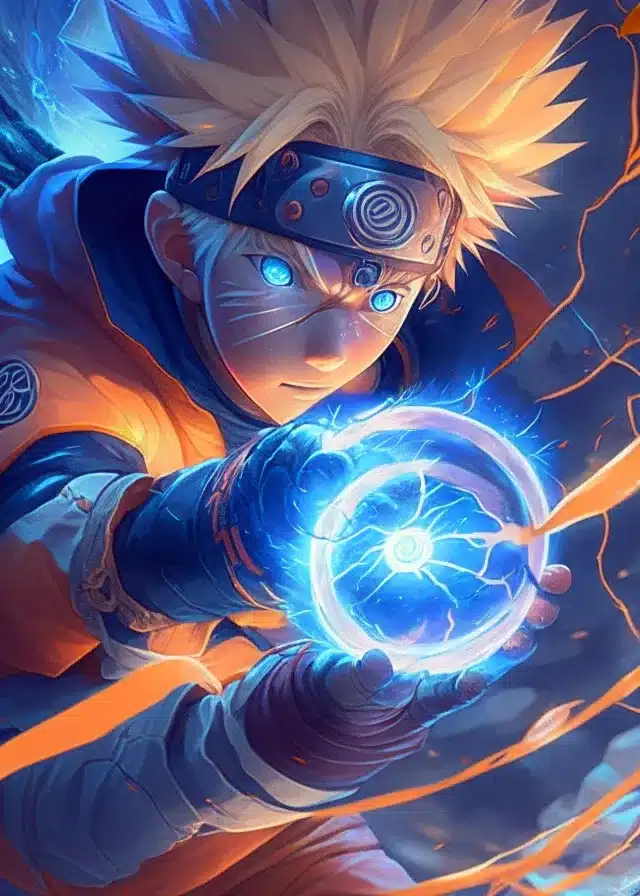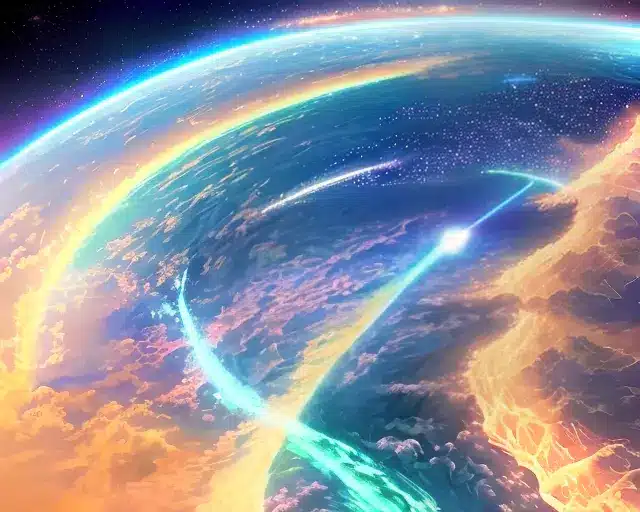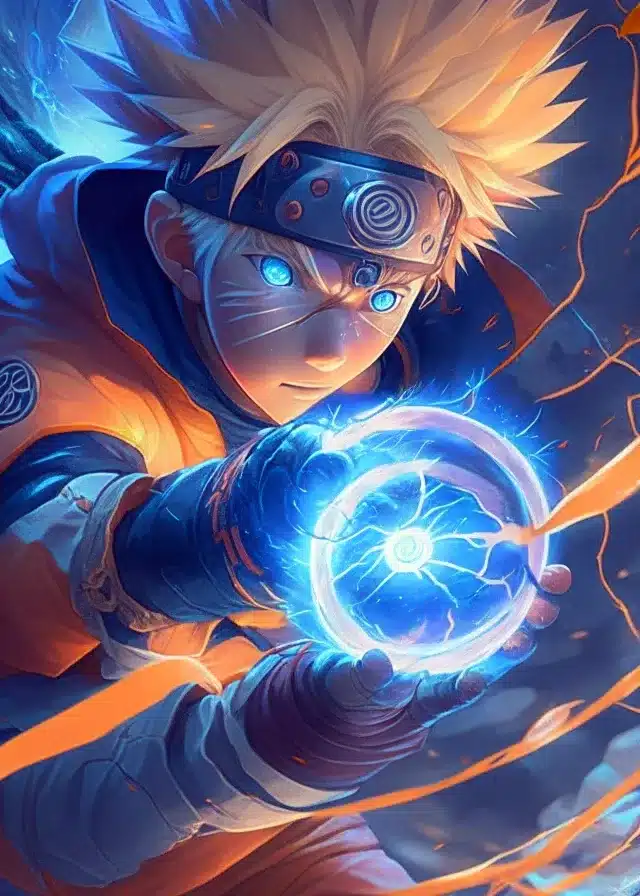When it comes to Japan the first thing that comes to the mind is the anime and manga industry of Japan but did you knew that anime was not actually originated in Japan and what is actually manga is it same as comics or is it completely diffrent.
I thought the same and wanted to answer this question so here is the post in which we will learn what is different between anime and manga, how the get originated and many more key differences and similarities.
So without further ado lets start.
Introduction
A. Brief explanation of manga and anime
When it comes to Japanese entertainment, two terms that often come up are “manga” and “anime.”
Manga refers to Japanese comic books, while anime refers to animated adaptations of these comics or original animated productions.
Manga and anime are both highly popular and have gained a significant following not only in Japan but also worldwide.
Understanding the differences between manga and anime is important for fans and enthusiasts as it allows for a deeper appreciation of each medium’s unique qualities.
B. Importance of understanding their differences
While manga and anime share a common origin and often complement each other, they also have distinct characteristics that set them apart.
Understanding these differences can enhance our understanding and enjoyment of both mediums.
By exploring their visual styles, storytelling techniques, release schedules, cultural significance, and more, we can gain a more comprehensive perspective on manga and anime and appreciate the creative expressions they offer.
Origins and Medium
A. Manga: History and Characteristics
Manga, a term derived from the Japanese word for “whimsical pictures,” has a rich history that dates back to the 12th century.
The earliest form of manga can be traced to the emakimono, hand-scrolls featuring sequential illustrations.
However, modern manga as we know it today emerged in the late 19th century, influenced by Western comic strips and the rise of printing technology.
One defining characteristic of manga is its distinctive black-and-white art style. Manga artists, known as mangaka, employ a variety of artistic techniques to convey emotions, action, and storytelling.
The panels are organized in a specific reading order, with a focus on visual flow and pacing.
Manga offers a more intimate and personal reading experience, allowing readers to engage with the story at their own pace and interpret the imagery through their imagination.
B. Anime: Evolution from Manga and Unique Features
Anime, on the other hand, refers to animated adaptations of manga or original animated productions.
While anime draws its roots from manga, it has developed its own unique features and characteristics over the years.
Unlike manga, anime brings the static images of manga to life through motion, color, and sound.
It offers a more immersive and dynamic experience with the use of animation techniques such as motion capture, 3D rendering, and special effects.
Anime also allows for the inclusion of original soundtracks, voice acting, and sound effects, further enhancing the overall viewing experience.
This audiovisual presentation adds depth to the narrative and helps create a unique atmosphere and emotional connection with the audience.
Visual Style and Artistic Expression
a. Manga: Emphasis on Static Illustrations
Manga, at its core, is all about the power of static illustrations.
With origins deeply rooted in traditional Japanese art forms, manga places a strong emphasis on the beauty and detail of still images.
The art styles in manga can vary greatly, ranging from realistic to highly stylized, but they all share a common characteristic: black and white ink drawings.
Each panel is meticulously designed to tell a specific part of the story, and the arrangement and sequence of these panels play a crucial role in guiding the reader’s experience.
By controlling the pacing and strategically placing panels, mangaka (manga artists) can create dramatic effects, build tension, and even surprise readers with unexpected twists.
Since manga lacks motion, the focus shifts to other aspects of artistic expression. Facial expressions, body language, and intricate details become paramount.
Mangaka skillfully utilize these elements to convey the characters’ emotions and personalities.
b. Anime: Dynamic Movement and Animation Techniques
Anime takes the static illustrations of manga and transforms them into a vibrant world of dynamic movement and animation.
Through a combination of frame-by-frame animation, color, and digital effects, anime breathes life into the characters and their surroundings.
One of the most striking features of anime is its ability to showcase fluid movement and captivating action sequences.
Characters leap, run, and fight with incredible grace and precision.
The animation techniques used, such as keyframes and in-betweening, allow for smooth transitions between different poses, creating a sense of motion that captivates the audience.
Action scenes in anime are often a feast for the eyes, with fast-paced choreography and impressive visual effects.
The use of color in anime is another noteworthy aspect. Unlike manga, which relies on black and white ink, anime embraces a full spectrum of colors.
Additionally, anime’s audiovisual presentation is an integral part of its artistic expression.
Voice acting, background music, and sound effects all contribute to the overall atmosphere and emotional impact.
The synergy between the visuals and the auditory elements enhances the storytelling, making anime a truly immersive experience.
In conclusion, manga’s strength lies in its static illustrations, utilizing intricate artwork and panel arrangement to engage readers’ imagination.
On the other hand, anime takes these illustrations and brings them to life through dynamic movement, animation techniques, and the use of color and sound.
Each medium offers a unique form of artistic expression, and understanding these differences allows us to appreciate the distinct qualities of both manga and anime.
Adaptations and Fidelity
a. Manga Adaptations into Anime
One fascinating aspect of the manga and anime relationship is the adaptation process.
Many popular manga series are adapted into anime, bringing the stories and characters to life in animated form.
This adaptation allows fans to experience their favorite manga in a new and dynamic way.
When a manga is adapted into an anime, the level of fidelity to the source material can vary.
Some anime faithfully follow the manga’s storyline, character designs, and overall art style. These adaptations aim to recreate the manga’s world and capture its essence, pleasing fans who appreciate a faithful adaptation.
However, in some cases, anime adaptations may deviate from the manga. This can occur due to a variety of reasons, including creative choices, time constraints, or the desire to explore new storylines.
b. Anime Adaptations into Manga
In addition to manga-to-anime adaptations, the reverse also happens: anime being adapted into manga.
Anime adaptations into manga can offer a different experience for fans who prefer the format of a comic book.
Manga adaptations of anime often aim to capture the essence of the animated series while presenting the story and visuals in a static format.
This means that dynamic movement, audiovisual effects, and voice acting are replaced by panels and speech bubbles.
Manga adaptations can be a way for fans to revisit their favorite anime, allowing them to engage with the story and characters at their own pace.
Manga adaptations may follow the anime faithfully or introduce variations, just as anime adaptations of manga can. They can provide additional details, explore side stories or alternate endings, and even offer a different artistic interpretation of the anime’s visuals.
These manga adaptations can be a valuable companion to the anime, offering fans a chance to delve deeper into the world they love.
In conclusion, manga-to-anime and anime-to-manga adaptations provide fans with alternative ways to engage with their favorite stories.
While some adaptations strive for fidelity to the source material, others may introduce creative variations.
Regardless of the approach, adaptations serve as a means to expand and explore the narratives and characters that have captured the hearts of fans in both the manga and anime realms.
Release Schedule and Availability
a. Manga: Serializations and Publication Timelines
Manga releases follow a unique serialization and publication timeline. In Japan, manga chapters are typically first serialized in weekly, monthly, or quarterly manga magazines.
These magazines feature multiple manga series, each releasing a new chapter in each issue. Manga magazines have a dedicated fanbase that eagerly awaits the release of their favorite series.
The serialization process allows mangaka to receive immediate feedback from readers and adjust their storytelling accordingly.
Once a manga series gains popularity, it may be compiled into tankobon volumes, which are standalone book collections containing multiple chapters. Tankobon volumes are typically released on a monthly or quarterly basis and are available for purchase in bookstores or online platforms.
Outside of Japan, manga is often licensed and translated into different languages, allowing fans worldwide to enjoy their favorite series. The release schedule for translated versions can vary depending on the publishing company and localization process.
b. Anime: Broadcasting and Streaming Schedules
Anime releases follow a different schedule compared to manga. Once an anime adaptation is greenlit, production begins, and episodes are typically completed in advance.
The release format can vary, with anime series being aired on television, streamed on dedicated platforms, or released as complete seasons.
For television broadcasting, anime episodes are usually aired weekly or bi-weekly on specific time slots. Fans eagerly tune in to catch the latest episodes as they are released.
Broadcasting schedules may differ between regions, with simultaneous or delayed releases depending on licensing agreements.
With the rise of streaming platforms, many anime series are now released exclusively on these platforms. Streaming services, such as Crunchyroll, Funimation, and Netflix, offer a convenient way for fans to access a wide range of anime titles.
Depending on licensing arrangements, episodes may be released weekly, released all at once (binge-watching format), or a combination of both.
Cultural Significance and Popularity
a. Manga: Influence on Japanese Culture and Worldwide Reach
Manga holds a significant place in Japanese culture and has had a profound influence on various aspects of society.
In Japan, manga is more than just entertainment; it is a form of artistic expression that spans across generations. Manga covers a wide range of genres, including shonen (aimed at young boys), shojo (aimed at young girls), seinen (aimed at adult males), and josei (aimed at adult females), catering to diverse readerships.
Manga has become deeply ingrained in Japanese daily life, with manga cafes, libraries, and specialized stores dedicated to manga.
It has permeated different forms of media, such as films, television dramas, and merchandise. Additionally, manga conventions and events attract thousands of fans who celebrate their love for the medium.
Beyond Japan, manga has achieved global recognition and popularity. Translated manga versions are available in multiple languages, allowing fans worldwide to immerse themselves in the diverse stories and art styles.
Manga’s influence extends to Western comics as well, with many creators drawing inspiration from manga’s storytelling techniques and visual styles.
Manga has also played a vital role in promoting Japanese culture globally. It acts as a gateway for non-Japanese readers to explore Japanese traditions, customs, and social issues.
b. Anime: Global Impact and Fanbase Growth
Anime has experienced a remarkable rise in global popularity and has become a prominent part of popular culture worldwide.
The appeal of anime lies in its ability to tell captivating stories with visually stunning animation and diverse genres, appealing to a wide range of audiences.
The global impact of anime can be seen in the growing number of dedicated streaming platforms, conventions, and fan communities worldwide.
Streaming services like Crunchyroll, Funimation, and Netflix have made anime more accessible, allowing fans to watch their favorite series from anywhere at any time.
Anime’s popularity has transcended borders and cultures. Its themes, art styles, and narratives have resonated with audiences from different backgrounds. The distinct blend of Japanese storytelling, cultural references, and universal themes has contributed to its widespread appeal.
Moreover, anime has fostered a passionate and dedicated fanbase around the world. Fans engage in discussions, cosplay, fan art, and fan fiction, creating a vibrant community that celebrates and shares their love for anime.
Anime conventions, such as Anime Expo and Comic-Con, attract thousands of attendees, showcasing the global reach and impact of the medium.
In summary, manga and anime have a profound cultural significance and continue to gain popularity worldwide.
Manga’s influence on Japanese culture and its global reach have made it a cultural phenomenon, while anime’s global impact and fanbase growth have transformed it into a major player in popular culture.
Together, manga and anime have left an indelible mark on the entertainment industry and have become beloved mediums that connect people across different cultures and backgrounds.
Conclusion
a. Recap of Key Differences between Manga and Anime:
- Medium: Manga is a comic book format, consisting of static illustrations and text, while anime is a form of animation that brings illustrations to life with dynamic movement and audiovisual effects.
- Visual Style: Manga emphasizes detailed still images, utilizing black and white ink drawings, while anime utilizes color, animation techniques, and visual effects to create vibrant and dynamic visuals.
- Release Schedule: Manga chapters are serialized in magazines before being compiled into tankobon volumes, while anime episodes are typically produced in advance and released on a broadcasting or streaming schedule.
- Adaptations: Manga often gets adapted into anime, with varying degrees of fidelity to the source material, while anime can be adapted into manga, providing a different format for fans to engage with the story and characters.
b. Appreciating Their Unique Qualities and the Impact on Fans:
Both manga and anime have their distinct qualities and play significant roles in the lives of fans. Manga’s static illustrations allow readers to immerse themselves at their own pace, fostering personal connections with the story and characters.
On the other hand, anime’s animation and audiovisual presentation create a dynamic and immersive experience that captivates viewers.
The impact of manga and anime on fans cannot be overstated. They have become avenues for creativity, self-expression, and community-building.
Fans connect through discussions, fan art, cosplay, and conventions, sharing their love for these mediums and forging lasting friendships.
The global popularity of manga and anime has also fostered cultural exchange, introducing audiences to Japanese traditions, storytelling, and art styles.
Appreciating the unique qualities of manga and anime allows us to delve deeper into the worlds they create and understand the different ways they engage and inspire fans.
Whether we prefer the intimate experience of reading manga or the captivating visuals and storytelling of anime, both mediums offer diverse and enriching experiences that have left an indelible mark on popular culture.
In conclusion, manga and anime stand as distinctive mediums, each with its own strengths and characteristics.
They have influenced Japanese culture and gained widespread popularity worldwide.
By understanding and appreciating the differences between manga and anime, we can embrace the unique qualities of each and celebrate the profound impact they have on fans across the globe.







